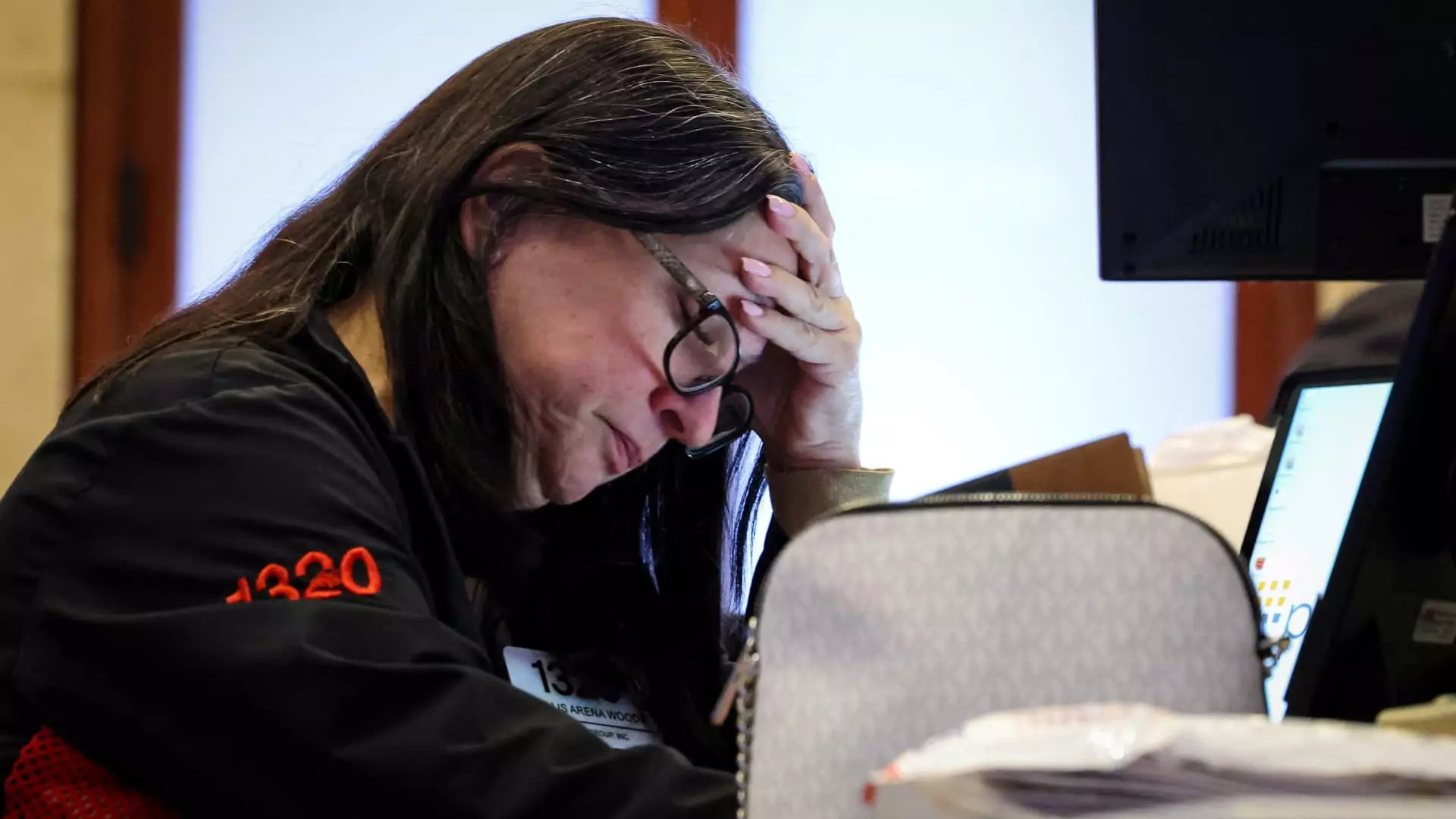The impact of President Donald Trump’s trade wars is stirring palpable distress among economists and market watchers alike. A recent assessment by Torsten Slok, the chief economist at Apollo Global Management, paints a bleak picture for the nation’s economic landscape. The term “stagflation” is making a disturbing comeback as the very fabric of America’s financial stability hangs by a thread. Unfortunately, this dire warning is not merely an abstract concern; it highlights the potential for an economy that both shrinks and inflates simultaneously—a scenario that harkens back to the dark days of the 1970s, and many are rightfully worried.
The trade war, driven by an aggressive dual tariff strategy, has provoked retaliation from global economic players, primarily China. This tug-of-war is escalating into a battle that those wary of its consequences find highly alarming. The looming threat is more than just increased prices for consumers; it risks a significant downturn in GDP growth, with estimates suggesting that a 1.5% reduction could occur if the current tariff conditions persist. This reduction comes at an inopportune time, with GDP having posted a promising 2.3% growth in the last quarter of the previous year. The apparent contradiction—promising growth overshadowed by looming threats—is reminiscent of the turbulence that often precedes a market crash.
The Inflationary Spiral
Inflation isn’t just a theoretical concern; it’s knocking at our doors, as economic predictions estimate a rise of approximately 1.5 percentage points due to the tariffs. Such numbers aren’t mere statistics; they represent real-world consequences for families deciding whether to fill their grocery carts or save their funds. This predicament creates a vicious cycle—higher prices and reduced purchasing power result in a dampened consumer spirit and a spirit-crushing economic outlook.
The political ramifications of this situation cannot be denied. President Trump’s adamant refusal to shift course in response to this developing crisis may play well with his base, but it does little to alleviate the concerns of Wall Street investors and grounded economists. As the S&P 500 hurtles down more than 17% from its recent peak, the implications are clear: there is a deep and widening chasm between political bravado and financial reality. Companies, particularly those considered the “Magnificent Seven,” which includes giants like Apple and Amazon, have cumulatively lost over $1 trillion in market value—a staggering figure that speaks to the fragile state of market confidence.
Sector-Specific Impact: The Tech Titans in Turmoil
The tech sector is especially vulnerable amid this tariff turmoil, as many of these companies derive substantial revenue from overseas markets. Consequently, their financial forecasts adjust downward, colliding with the reality of increasing costs and diminishing returns. With the Nasdaq Composite entering bear territory and witnessing declines approaching 23% from just months prior, the ramifications of a trade war are critically palpable in tech stocks. The interconnectedness of the global economy ensures that the ripples of one nation’s trade policies resonate across the entire market landscape.
This predicament raises fundamental questions about the long-term sustainability of such an aggressive trade agenda. Will the benefits of securing a more favorable trade deal outweigh the immediate losses currently experienced by American companies? Rhetoric that champions nationalism must be balanced against the hard facts of market dynamics, which often ignore ideology in favor of pragmatism.
The Path Forward: Possible Routes to Recovery
The way out of this self-inflicted predicament is fraught with challenges; policymakers must grasp that a diplomatic finesse in trade relations may often yield more fruitful results than overt hostility. Future negotiations should lean toward collaboration rather than confrontation, focusing on creating win-win scenarios that uplift the economy instead of inducing further malaise.
Encouragingly, history reflects that economic resilience often shines brightest in times of adversity. Solutions may emerge that not only restore investor confidence but also invigorate the economic engine. However, such outcomes necessitate pragmatic economic policies and a willingness to adapt in a rapidly changing global landscape. Without this adaptability, the U.S. may find itself spiraling deeper into an economic quagmire, forever haunted by the shadows of poor decision-making and stubbornness in the face of clear and compelling evidence.

